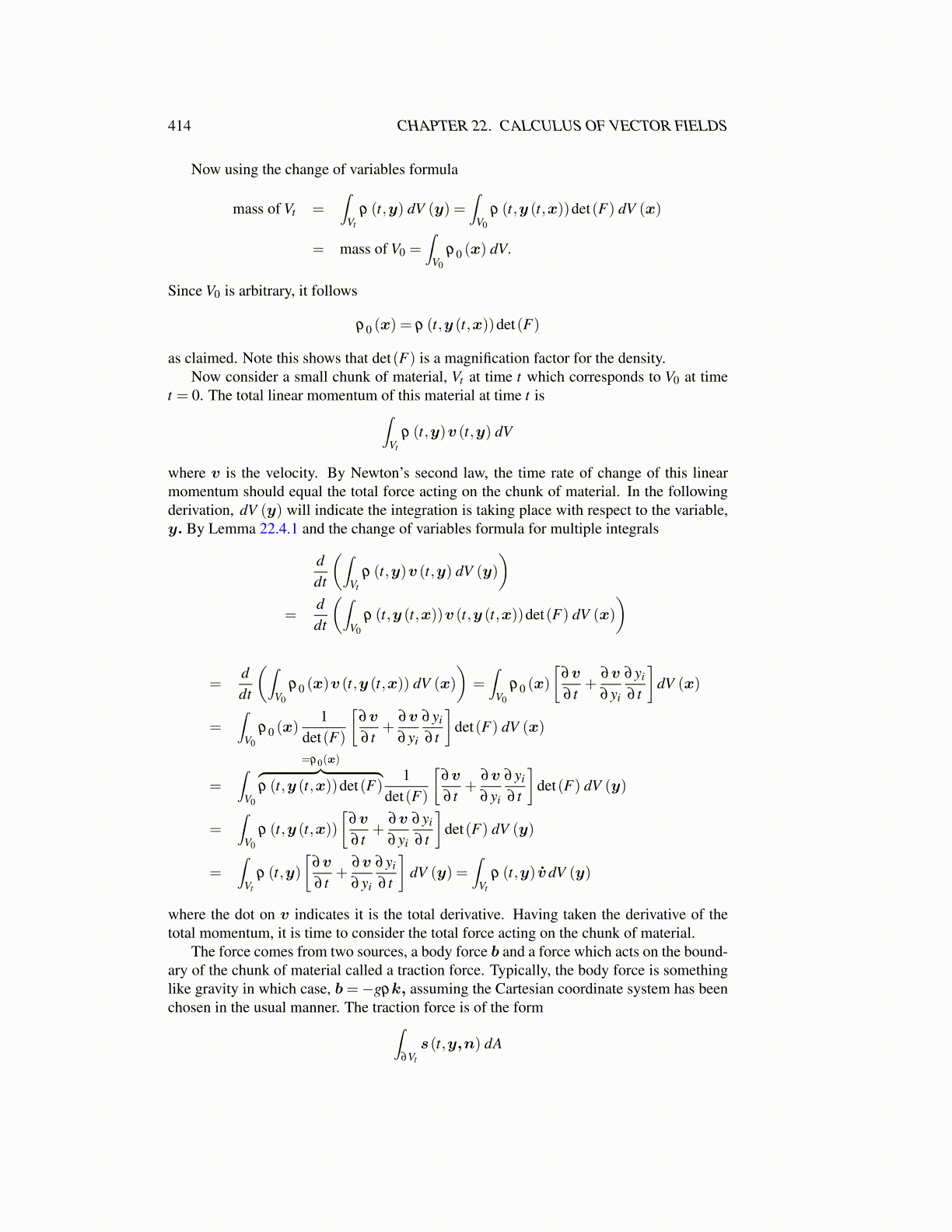
414 CHAPTER 22. CALCULUS OF VECTOR FIELDS
Now using the change of variables formula
mass of Vt =∫
Vt
ρ (t,y) dV (y) =∫
V0
ρ (t,y (t,x))det(F) dV (x)
= mass of V0 =∫
V0
ρ0 (x) dV.
Since V0 is arbitrary, it follows
ρ0 (x) = ρ (t,y (t,x))det(F)
as claimed. Note this shows that det(F) is a magnification factor for the density.Now consider a small chunk of material, Vt at time t which corresponds to V0 at time
t = 0. The total linear momentum of this material at time t is∫Vt
ρ (t,y)v (t,y) dV
where v is the velocity. By Newton’s second law, the time rate of change of this linearmomentum should equal the total force acting on the chunk of material. In the followingderivation, dV (y) will indicate the integration is taking place with respect to the variable,y. By Lemma 22.4.1 and the change of variables formula for multiple integrals
ddt
(∫Vt
ρ (t,y)v (t,y) dV (y)
)=
ddt
(∫V0
ρ (t,y (t,x))v (t,y (t,x))det(F) dV (x)
)
=ddt
(∫V0
ρ0 (x)v (t,y (t,x)) dV (x)
)=∫
V0
ρ0 (x)
[∂v
∂ t+
∂v
∂yi
∂yi
∂ t
]dV (x)
=∫
V0
ρ0 (x)1
det(F)
[∂v
∂ t+
∂v
∂yi
∂yi
∂ t
]det(F) dV (x)
=∫
V0
=ρ0(x)︷ ︸︸ ︷ρ (t,y (t,x))det(F)
1det(F)
[∂v
∂ t+
∂v
∂yi
∂yi
∂ t
]det(F) dV (y)
=∫
V0
ρ (t,y (t,x))[
∂v
∂ t+
∂v
∂yi
∂yi
∂ t
]det(F) dV (y)
=∫
Vt
ρ (t,y)[
∂v
∂ t+
∂v
∂yi
∂yi
∂ t
]dV (y) =
∫Vt
ρ (t,y) v̇dV (y)
where the dot on v indicates it is the total derivative. Having taken the derivative of thetotal momentum, it is time to consider the total force acting on the chunk of material.
The force comes from two sources, a body force b and a force which acts on the bound-ary of the chunk of material called a traction force. Typically, the body force is somethinglike gravity in which case, b=−gρk, assuming the Cartesian coordinate system has beenchosen in the usual manner. The traction force is of the form∫
∂Vt
s(t,y,n) dA